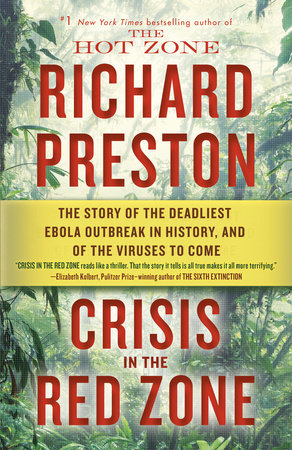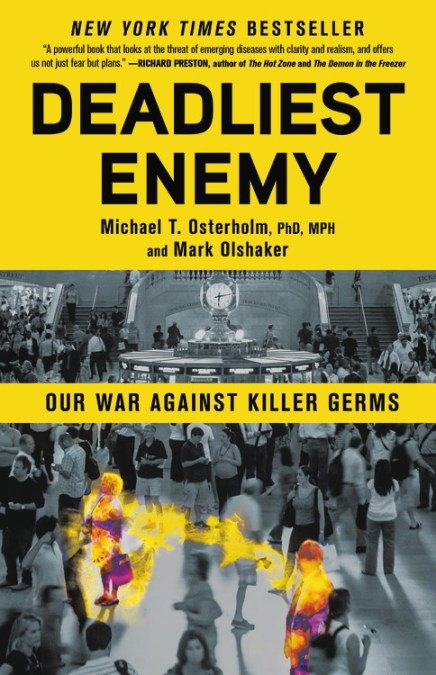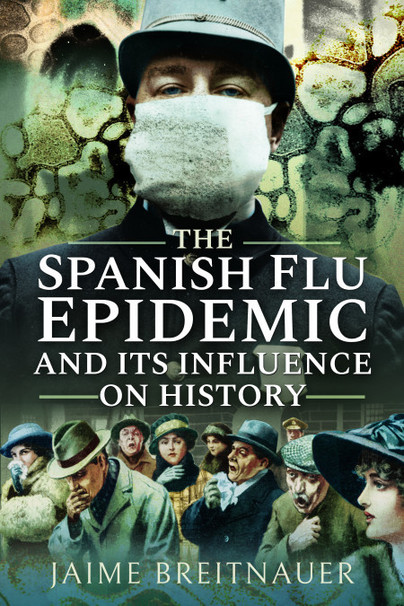From FT The medical mysteries of coronavirus
19 d’abril 2020
17 d’abril 2020
A known unknown
Coronavirus and the Limits of Economics
Why standard economic theories have no answers for this kind of crisis
You'll find an interesting article in FP
Why standard economic theories have no answers for this kind of crisis
You'll find an interesting article in FP
Economists have long made the distinction between uncertainty and risk. Uncertainty is typically understood as involving outcomes that cannot straightforwardly be assigned a probability, unlike risk. Economics offers limited resources to understand how to make decisions in the presence of fundamental uncertainty. But a still deeper form of uncertainty is one in which the possible outcomes cannot easily be anticipated at all. Such a wildly unpredictable outcome has come to be popularly known in recent years as a black swan event.
The coronavirus pandemic might at first appear to have been such a black swan event, but that claim does not withstand scrutiny: The possibility of such a threat was long recognized by experts. This recognition led to scenarios being discussed at the highest levels of governments. The possibility of a pandemic was therefore a “known unknown” rather than an “unknown unknown.”
Consider that an economy cannot be separated from society: It is socially embedded. The notion that the economy can be analyzed independently of the public health, political, or social processes—often promoted by the dominant tradition in economics and reflected in general equilibrium theory—is shown by the pandemic to be not merely fragile but false.PS D Rumsfeld stated:
Reports that say that something hasn't happened are always interesting to me, because as we know, there are known knowns; there are things we know we know. We also know there are known unknowns; that is to say we know there are some things we do not know. But there are also unknown unknowns—the ones we don't know we don't know. And if one looks throughout the history of our country and other free countries, it is the latter category that tend to be the difficult ones.
Galeria Marlborough
16 d’abril 2020
The current COVID-19 test mess
Guidelines on COVID-19 in vitro diagnostic tests and their performance
If you receive a document with the title Guidelines on COVID-19 in vitro diagnostic tests and their performance you may expect to read about Guidelines and Performance. Unfortunately, you'll not find them in such document. After 2 months and a half, and an absolute market and regulatory chaos, the European Union releases a document that says that in the future they will provide some analysis of the situation. Meanwhile the regulation is the one enacted in 1998, that it was updated in 2017, but it will not be applied until 2022!!!
It could seem a joke if we were not talking about issues of life and death. The health and the economy is affected by his situation and unless we are able to asses the current extent of pandemics and immunity, we will not succeed from the current lockdown. Live and livelihood deserve better european policy makers.
If you receive a document with the title Guidelines on COVID-19 in vitro diagnostic tests and their performance you may expect to read about Guidelines and Performance. Unfortunately, you'll not find them in such document. After 2 months and a half, and an absolute market and regulatory chaos, the European Union releases a document that says that in the future they will provide some analysis of the situation. Meanwhile the regulation is the one enacted in 1998, that it was updated in 2017, but it will not be applied until 2022!!!
It could seem a joke if we were not talking about issues of life and death. The health and the economy is affected by his situation and unless we are able to asses the current extent of pandemics and immunity, we will not succeed from the current lockdown. Live and livelihood deserve better european policy makers.
Carlos Díaz
15 d’abril 2020
The viruses to come
Crisis in the Red Zone. THE STORY OF THE DEADLIEST EBOLA OUTBREAK IN HISTORY, AND OF THE VIRUSES TO COME
If you want to read a story of ebola outbreak and its implications beyond it, this is the book you have to read. It may be translated into a screenplay of a film.
At the end it says:
If you want to read a story of ebola outbreak and its implications beyond it, this is the book you have to read. It may be translated into a screenplay of a film.
At the end it says:
A family of viruses called the morbilliviruses is regarded by some experts as a leading candidate for the emergence of a previously unknown Level 4 monster that travels in the air. If there was no vaccine or drug for it, and if it was highly infectious, and if it floated out of peoples mouths, the virus could go around the world in a few weeks, traveling inside people who are flying on airplanes and walking through airport terminals, breathing.Glups!
14 d’abril 2020
A pandemic is not a war
Deadliest Enemy. Our War Against Killer Germs
Key messages from the book:
Key messages from the book:
To review, our greatest threats are:
1. Pathogens of pandemic potential, which essentially means influenza and the downstream effects of antimicrobial resistance.
2. Pathogens of critical regional importance, which include Ebola, coronaviruses like SARS and MERS, other viruses such as Lassa and Nipah, and Aedes-transmitted diseases such as dengue, yellow fever, and Zika.
3. Bioterrorism and dual-use research of concern (DURC), and gain-of-function research of concern (GOFRC).
4. Endemic diseases that continue to have a major impact on the world’s health, particularly among emerging nations, including malaria, tuberculosis, AIDS, viral hepatitis, childhood diarrheal diseases, and bacterial pneumonia.
Priority 1: Create a Manhattan Project–like program to secure a game-changing influenza vaccine and vaccinate the world.
Priority 2: Establish an international organization to urgently address all aspects of antimicrobial resistance.
Priority 3: Support and substantially expand the mission and scope of the Coalition for Epidemic Preparedness and Innovations (CEPI) to fast-track comprehensive public-private vaccine research, development, manufacturing, and distribution for diseases of current or potential critical regional importance.
Priority 4: Launch the Global Alliance for Control of Aedes-Transmitted Diseases (GAAD) and coordinate with the Bill & Melinda Gates Foundation’s malaria strategy, “Accelerate to Zero.
Priority 5: Fully implement the recommendations of the bipartisan report of the Blue Ribbon Study Panel on Biodefense.
Priority 6: Establish an international organization similar to the National Scientific Advisory Board for Biosecurity (NSABB) to minimize the use of DURC and GOFRC to transmit pathogens of pandemic potential
Priority 7: Recognize that TB, HIV/AIDS, malaria, and other life-threatening infectious diseases remain major global health problems
Priority 8: Anticipate climate-change effects
Priority 9: Adopt a One Health approach to human and animal diseases throughout the world.
13 d’abril 2020
Health supplies as strategic asset
China Rx
EXPOSING THE RISKS OF AMERICA'S DEPENDENCE ON CHINA FOR MEDICINE
Key messages from Chapter 14:
Given the current health crisis, you can change medicines by tests and it fits perfectly. You can apply it to your country.
EXPOSING THE RISKS OF AMERICA'S DEPENDENCE ON CHINA FOR MEDICINE
Key messages from Chapter 14:
China has been one of America's bankers, buying US Treasury bonds, and is now America's drugmaker. The centralization of the global supply of key ingredients for America's medicines in a single country poses enormous risks that must be mitigated.
Free market advocates may contend that the United States is better off outsourcing medicine making to China and allowing Americans to keep more of their money to spend on other goods. But medicines are essential for life. A country needs them to function. Prescription drugs are made by private corporations, but many serve a public purpose.
Not unlike the manufacture of other consumer products, business decisions about manufacturing essential drugs and their therapeutic ingredients have been left to the invisible hand of the market. Financial and human capital have migrated to countries with the lowest cost of doing business. Corporate executives and their boards have determined that for them, the benefits of dependence on China outweigh the risks.Key prescriptions to consider:
These decisions are too important to leave to the invisible hand. As China rapidly pursues a determined strategy to become a pharmaceutical power, US dependence on a single country will rise dramatically.
1. CONSIDER MEDICINES A STRATEGIC ASSET, NOT A COMMODITY TO BE BOUGHT AT THE LOWEST PRICE
2. TRACK AND FORECAST VULNERABILITIES IN THE SUPPLY OF AMERICA'S MEDICINES
3. PRIORITIZE A LIST OF MEDICINES FOR WHICH A SUPPLY INTERRUPTION POSES AN IMMEDIATE DANGER TO PUBLIC HEALTH
4. INVESTIGATE CHINESE DRUG CARTELS TO FIND OUT IF THEY CAUSE DRUG SHORTAGES IN THE UNITED STATES
5. PROVIDE INCENTIVES TO BRING DRUG MANUFACTURING HOME
6. ENSURE THE US MILITARY DOES NOT DEPEND ON CHINA FOR ESSENTIAL MEDICINES
7. STRENGTHEN, DON'T WEAKEN GOVERNMENT OVERSIGHT OF DRUG MANUFACTURERS
8. DON'T CEDE US REGULATORY OVERSIGHT OF DRUG MANUFACTURING TO CHINA
9. INCREASE FDA TESTING OF MEDICINES 10. LUCK IS NOT A STRATEGY: IDENTIFY PROBLEM PRODUCTS RAPIDLY
Given the current health crisis, you can change medicines by tests and it fits perfectly. You can apply it to your country.
12 d’abril 2020
Stories from spanish flu epidemic
THE SPANISH FLU EPIDEMIC AND ITS INFLUENCE ON HISTORY. Stories from the 1918–1920 global flu pandemic
From Chapter 11:
From Chapter 11:
Perhaps the most lasting legacy of Spanish flu is that it barely left a legacy at all. While it has continued to be studied and analysed in niche virology circles, the collective memory seemed to stub it out and hurry to move on. Were it not thanks to a handful of dedicated historians such as Geoff Rice and Richard Collier, who collected personal accounts of the tragedy through the 1970s and 1980s, many first-person testimonies may have been lost. There are a few explanations of this mass memory loss and one of them related to honour. Perhaps in order to dull the painful reality of the loss of a treasured father, husband, brother or son, much pomp was conveyed onto the memory of those who died in battle. Dying from flu, however, did not convey the same sense of honour. In fact, in a world where eugenics had played a strong role so far, it made otherwise brave men appear weak and flawed.
Time is a healer, though, and there are lots of good reasons to be interested in Spanish flu now, a hundred years on from the pandemic; to honour the dead, to analyse the medical response, to measure the impact of the virus on the health of the population through the relatively new discipline of
epigenetics … but perhaps the most pressing reason for us to remember the outbreaks from a virology, epidemiology, sociology and historical point of view, is because of the high possibility it could happen again.
The outbreak of Spanish flu at the start of the twentieth century is considered to be one of the deadliest infections in the history of humanity, affecting a minimum of 30 per cent of the global population, and killing around 5 per cent.In a previous post you may find additional details.
Subscriure's a:
Missatges (Atom)






